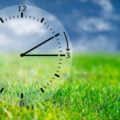Menopause is a natural phase in every woman’s life, typically occurring between the ages of 45 and 55. During this phase, there is a significant decline in female hormones, particularly estrogen, which plays a key role in bone health. This hormonal decline can increase the risk of osteoporosis.
According to 2020 ISTAT data, 13.5% of women and 2.3% of men reported being affected by osteoporosis, with prevalence increasing with age, reaching 32.2% in individuals over 74 years old (47% of women and 10.3% of men).
The regional distribution of osteoporosis prevalence shows significant variations. The highest percentages are recorded in Sardinia (32.8%), Campania (31.3%), and Sicily (30.1%), while the lowest are found in Trentino-Alto Adige (16.6%), Aosta Valley (18%), and Friuli Venezia Giulia (18.9%).
It is important to note that the prevalence of osteoporosis increases progressively with age, particularly in women over 55. This data highlights the importance of preventive strategies and awareness campaigns, especially in regions with higher rates.
In Italy, osteoporosis affects approximately 5 million people, 80% of whom are postmenopausal women.
An ideal diet to combat osteoporosis in postmenopausal women should be rich in essential nutrients for bone health, such as calcium, vitamin D, protein, magnesium, and vitamin K.
- Calcium is essential for maintaining bone density. The recommended daily amount for postmenopausal women is about 1,200 mg per day (low-fat cheeses, arugula and spinach, almonds, sardines…).
- Vitamin D promotes calcium absorption. Postmenopausal women need 800-1,000 IU per day (salmon, mackerel, tuna, milk, eggs…).
- Proteins help strengthen muscles, which support bones. It is important to balance animal and plant-based proteins (legumes, lean meats…).
- Magnesium and potassium are minerals that contribute to bone health by regulating the mineral balance in the bones (nuts, potatoes, bananas, oranges…).
- Vitamin K is important for the formation of bone proteins (green leafy vegetables).
Osteoporosis is indeed a significant threat, especially for postmenopausal women, as the decline in estrogen accelerates bone density loss, increasing the risk of fractures. Dried plums have several beneficial properties for the body, and are now considered a superfood. Published in Osteoporosis International, the results reveal that daily consumption may reduce the risk of fractures by slowing down age-related bone loss. Dried plums could offer a promising natural alternative: rich in polyphenols and other bioactive compounds, they appear to be capable of reducing the inflammatory processes responsible for bone loss.
Thermal therapies can provide valuable support for the prevention and management of osteoporosis. In particular, mineral-rich thermal waters (such as calcium and magnesium) and thermal muds can help improve bone mineralization and alleviate joint and muscle pain. Additionally, specific thermal programs include targeted physical activities, such as thermal water gymnastics, which promote muscle strengthening and joint mobility without overloading the bones.










